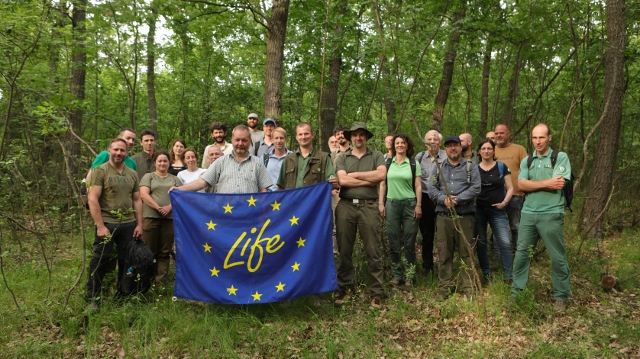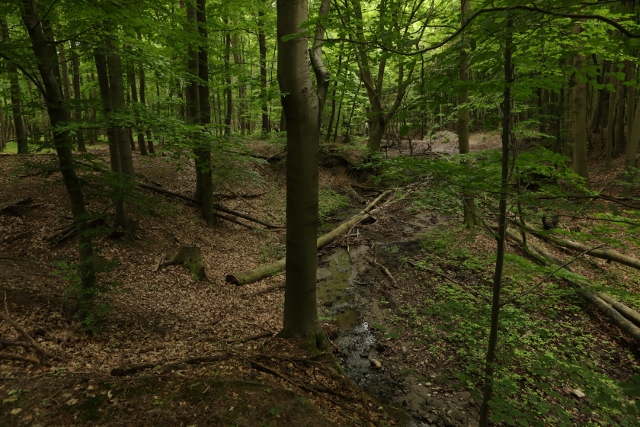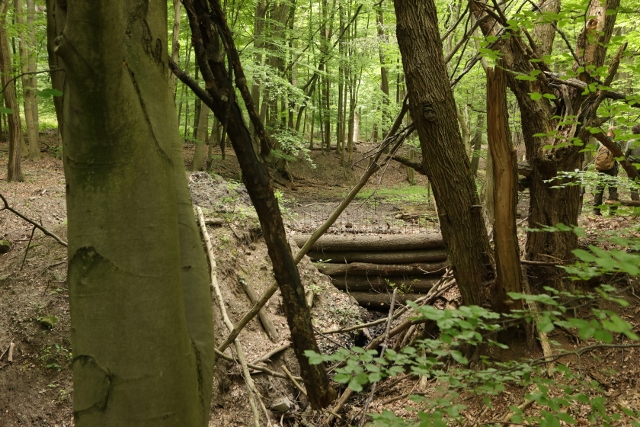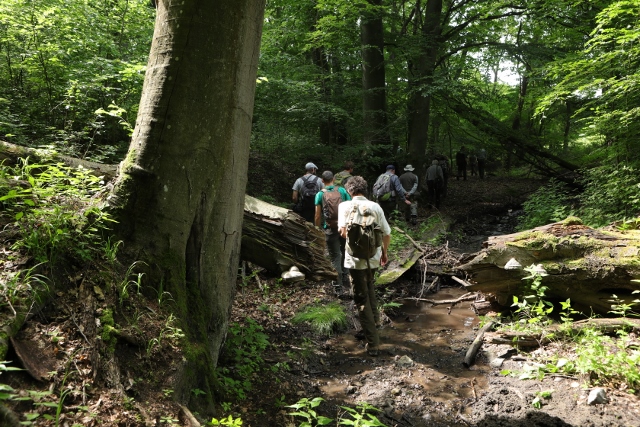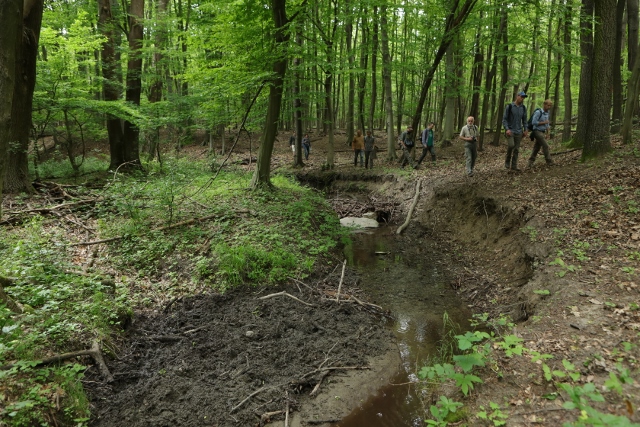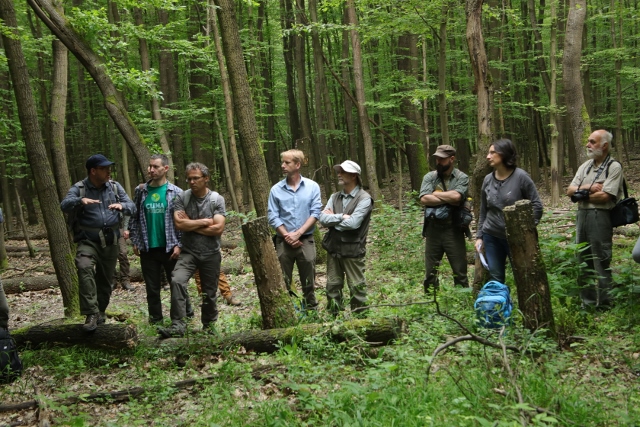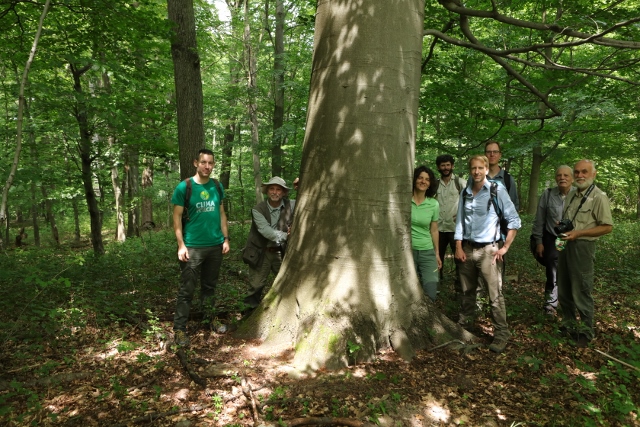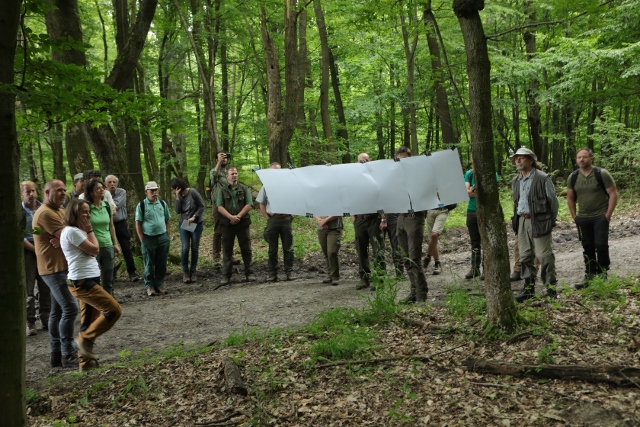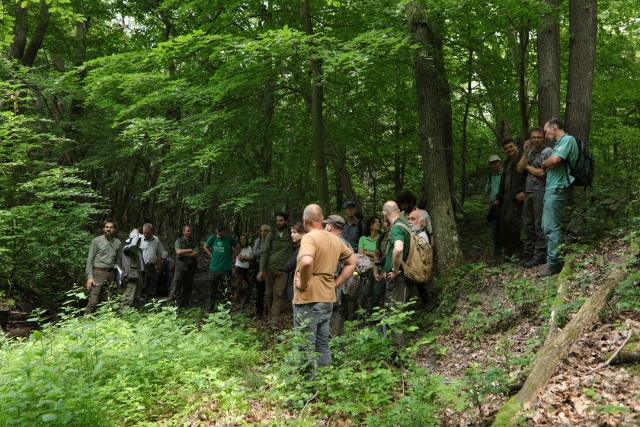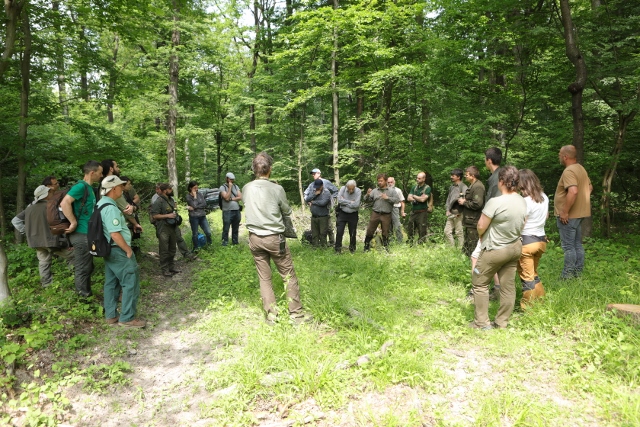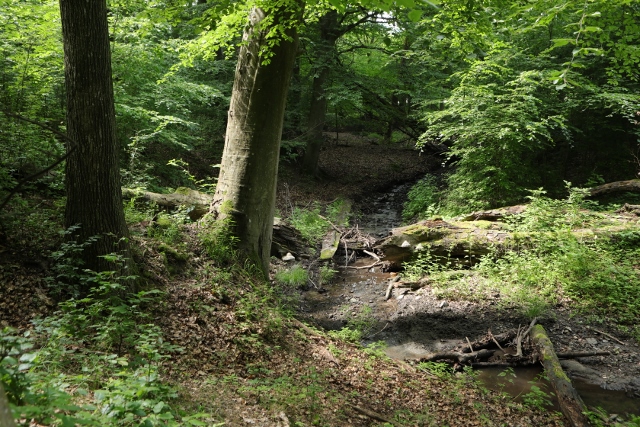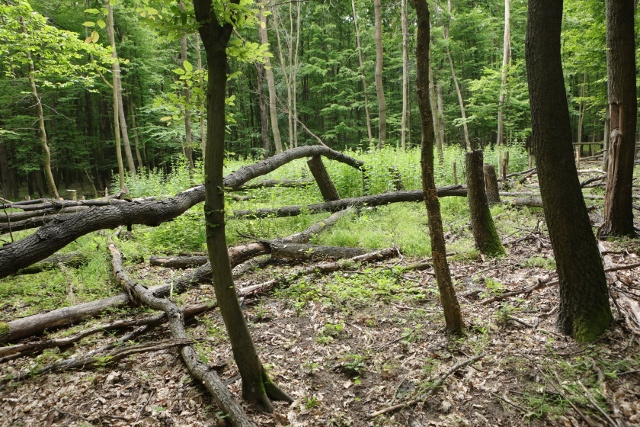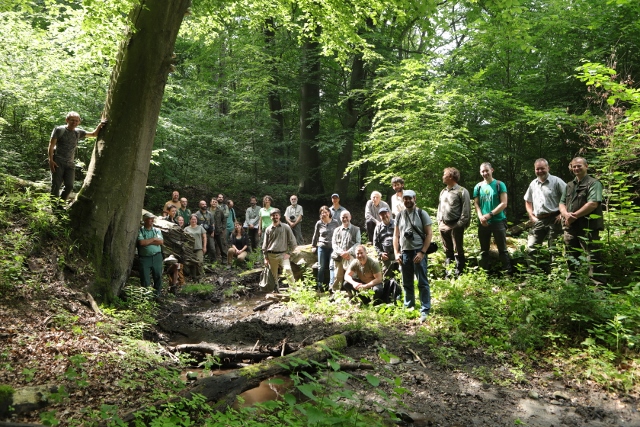A workshop and field presentation on close-to-nature forest management and climate-smart forest management was held on June 5-6, 2023, in the Börzsöny Mountains. The event was organized by the Centre for Ecological Research and WWF Hungary.
The aim of the event was to discuss the management options of forests imitating natural disturbances (within the framework of close-to-nature forest management and traditional forest management) at the locations of specific field interventions, as well as in the form of a debate session.
Interventions presented during the field program are currently running on public and private sites and connected to EU-funded projects, such as LIFE4OakForests and CLIMAFORCEELIFE. These projects test and apply nature conservation and close-to-nature forest management practices which aim to preserve biological diversity on the one hand, and to mitigate the effects of climate change on the other, using different forestry methods.
On the morning of the first day, Péter Géringer and Soma Horváth, on behalf of the Danube-Ipoly National Park Directorate (DINPD), and Réka Aszalós and Tamás Frank, experts from the Centre for Ecological Research introduced the habitat management interventions implemented within the LIFE4OakForests project in the forest area of the national park near Diósjenő. At this site, which is owned and managed by DINPD, among other things, interventions were made to develop microhabitats that support structural and species diversity.
In the afternoon, under the leadership of private forest owner Gábor Flamich, who is a partner working in the CLIMAFORCEELIFE project, and forest planner Gábor Tímár, we visited a forest area in the neighbourhood of Verőce. Here, we looked at the previously opened canopy gaps and discussed the lessons learned so far. This was particularly interesting, because in the area’s semi-arid sessile oak stands, it is a challenge to manage forests with continuous forest cover. From a management point of view, the orientation of this forest area is the most unfavourable from climate perspectives, as it faces southwest, which is why water retention is particularly important. Gábor Flamich plans to carry out water retention interventions in all his project sites. In the case of Verőce, in addition to the interventions to slow down the runoff, another aim is to deepen the bed of an existing temporary lake, which not only makes the microclimate of the forest more favourable, but also contributes to the improvement of the forest’s biodiversity as a wetland and thus its resilience.
The program ended with a debate session, where invited speakers explained the rationale and possibilities of using disturbance-based forest management methods. The debate was led by László Gálhidy, head of WWF’s forest programme, invited speakers were William Keeton, professor at the University of Vermont, Péter Ódor, director of the Centre for Ecological Research; Tibor Standovár, associate professor at ELTE TTK, and György Csóka, head of the Department of Forest Protection at ERTI. All speakers emphasized that in times of biodiversity crisis and climate change, it is utmost important to take into account natural forest dynamic processes and to use relevant forestry methods.
The second day of the programme started in Gábor Flamich’s forest in Nagybörzsöny, where we discussed the importance and possibilities of preserving the veteran trees. At Professor Keeton’s suggestion, we talked about the consequences of the inappropriate design of forest roads, such as soil loss, water loss, increasing risk of flash floods, and the spread of invasive species. These effects can be significantly reduced with a properly designed forest road network.
The most persistent members of the team went for a short hike in the Csarna Valley, where we talked about the importance of creating undisturbed forest areas.
The study trip is supported by the Trust for Mutual Understanding and the LIFE programme of the European Union through the CLIMAFORCEELIFE (LIFE19 CCA/SK/001276) project.
